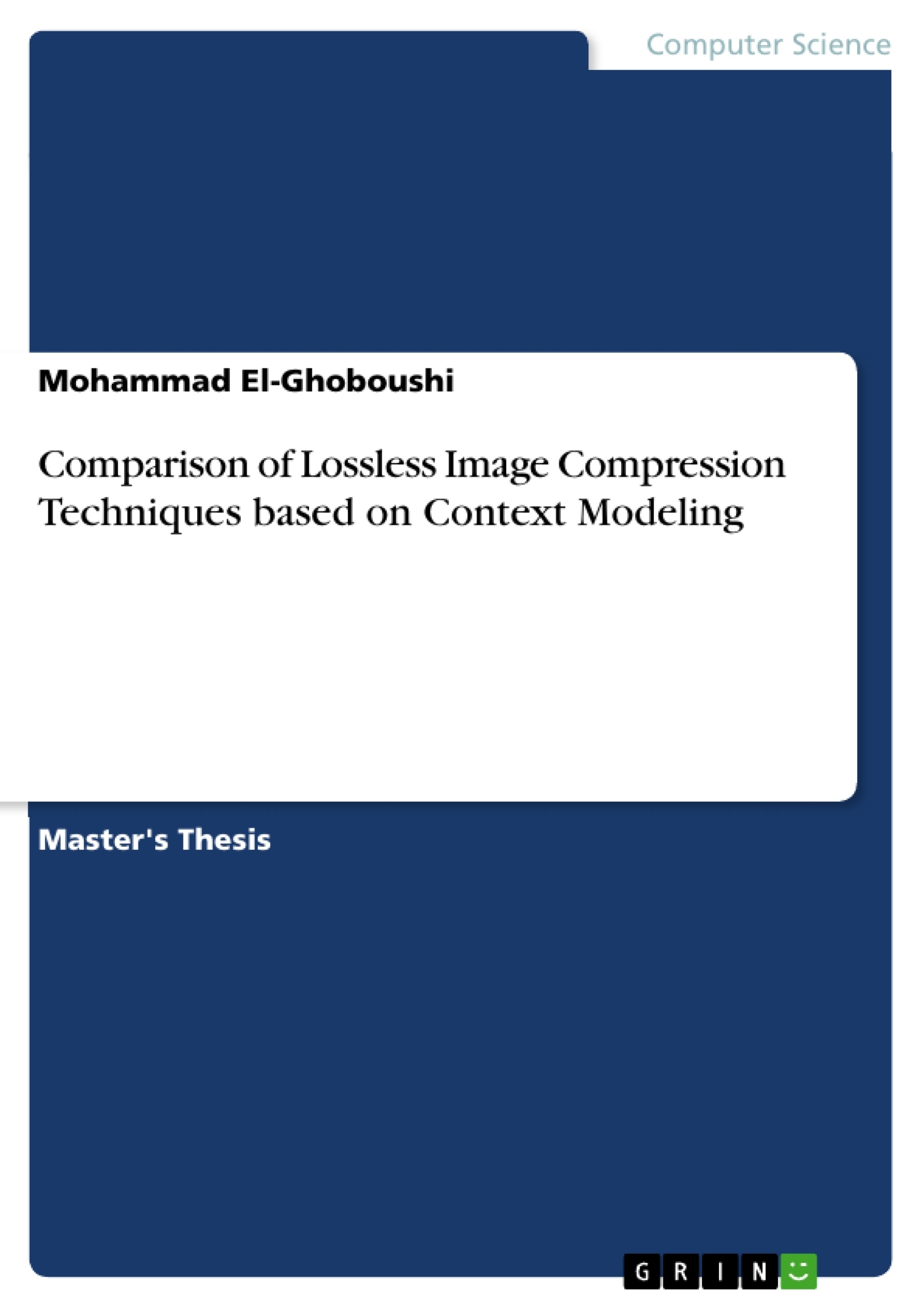In this thesis various methods for lossless compression of source image data are analyzed and discussed. The main focus in this work is lossless compression algorithms based on context modeling using tree structure.
We are going to compare CALIC, GCT-I algorithms to the
JPEG2000 standard algorithm which will be considered the reference of comparison.
This work includes research on how to modify CALIC algorithm in continuous-tone mode by truncating tails of the error histogram which may lead to improve CALIC compression performance.
Also, we are going to propose a modification to CALIC in binary
mode by eliminating error feedback mechanism. As when any pixel to be encoded has a different grey level than any of the neighboring pixels, CALIC triggers an escape sequence that switches the algorithm from binary mode to continuous-tone mode. Which means in this case the pixel will be treated as if it was in continuous-tone region. This minor modification should improve CALIC performance in binary images.
Finally, we are going to discuss the GCT-I on medical images and compare results to the JPEG2000 standard.
Inhaltsverzeichnis (Table of Contents)
- INTRODUCTION
- Data compression
- Basic concepts in image compression
- Lossless and lossy cases
- Measures of compression
- Paradigm of compression
- Arithmetic coding
- Thesis objectives
- Contents of thesis' chapters
- CONTEXT MODELING
- Fundamentals
- Context Tree
- Structure of context tree
- Static and semi-adaptive approaches
- Construction of an initial context tree
- Pruning of context tree
- LOSSLESS IMAGE COMPRESSION TECHNIQUES
- JPEG2000 standard
- CALIC
- CALIC Frame Structure
- Neighborhood pixels involved
- LINEAR PREDICTION - GAP
- CODING CONTEXT
- CONTEXT MODELING FOR ADAPTIVE ERROR FEEDBACK
- Contexts Formation
- Error Feedback
- ENTROPY CODING OF PREDICTION ERRORS
- Error Sign Flipping
- Remapping Errors
- Histogram Tail Truncation
- Proposed modification
- Continuous-tone mode results
- BINARY MODE
- Proposed modification
- General Context Tree based on Intensity
- Context template
- Compression scheme
- GCT-I Simulation results
- COMPARATIVE ANALYSIS OF CONSIDERED TECHNIQUES
- Lossless image compression
- Context modeling in image compression
- Performance comparison of different compression techniques
- Entropy coding and context-based prediction
- Application of context modeling in medical imaging
- Chapter 1: Introduction This chapter introduces the concept of data compression, focusing on lossless image compression techniques. It discusses the basic concepts involved in image compression, including lossless and lossy compression, measures of compression, and the paradigm of compression. The chapter further outlines the objectives and structure of the thesis.
- Chapter 2: Context Modeling This chapter delves into the fundamentals of context modeling, specifically focusing on the concept of a context tree. It explores the structure, construction, and pruning of context trees in relation to image compression. It also discusses different approaches to context modeling, such as static and semi-adaptive approaches.
- Chapter 3: Lossless Image Compression Techniques This chapter presents different lossless image compression techniques, including JPEG2000, CALIC, and the proposed GCT-I. It explores the details of each technique, including their specific algorithms, frame structures, and entropy coding methods. This chapter also investigates the performance of these techniques through simulations and analysis.
Zielsetzung und Themenschwerpunkte (Objectives and Key Themes)
This thesis explores lossless image compression techniques, specifically focusing on context modeling. The study aims to analyze and compare different approaches to lossless image compression, particularly those employing context-based models. It investigates the performance and efficiency of various techniques, including JPEG2000, CALIC, and a proposed General Context Tree based on Intensity (GCT-I).Zusammenfassung der Kapitel (Chapter Summaries)
Schlüsselwörter (Keywords)
This thesis investigates lossless image compression techniques, focusing on context modeling for efficient data compression. Key terms and concepts include JPEG2000, CALIC, General Context Tree based on Intensity (GCT-I), entropy coding, context-based prediction, and adaptive error feedback. The study highlights the application of these techniques in medical image compression, aiming to enhance data efficiency while maintaining image quality.- Citar trabajo
- Assistant Teacher Mohammad El-Ghoboushi (Autor), 2014, Comparison of Lossless Image Compression Techniques based on Context Modeling, Múnich, GRIN Verlag, https://www.grin.com/document/294973



